Caribou Hide Robe Item Number: E1065-0 from the National Museum of Natural History
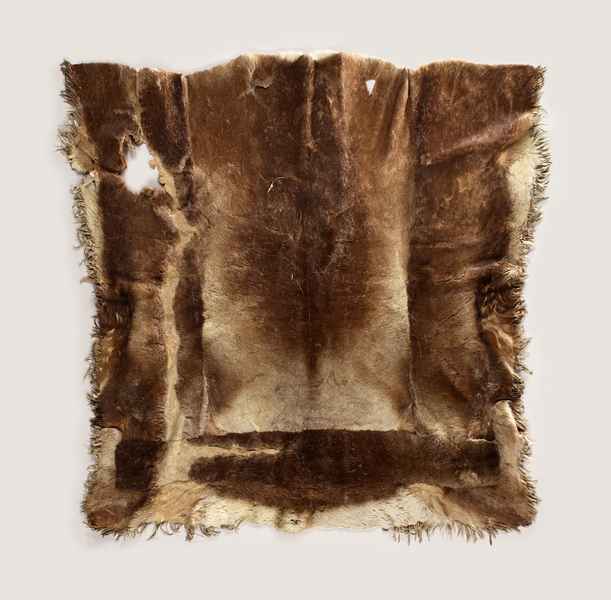
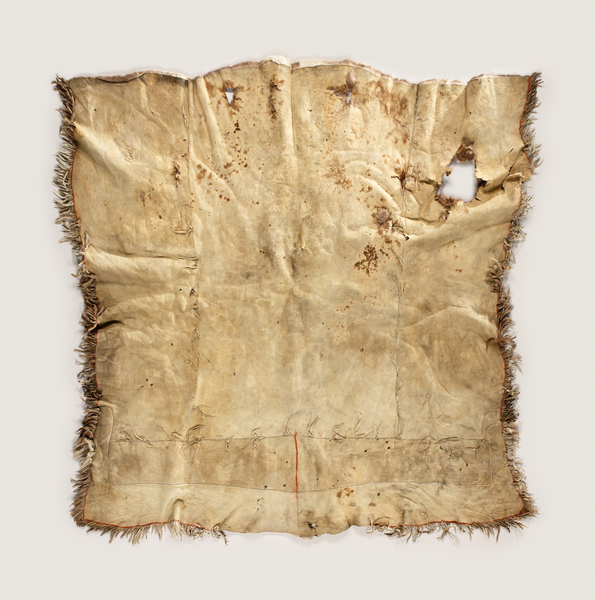
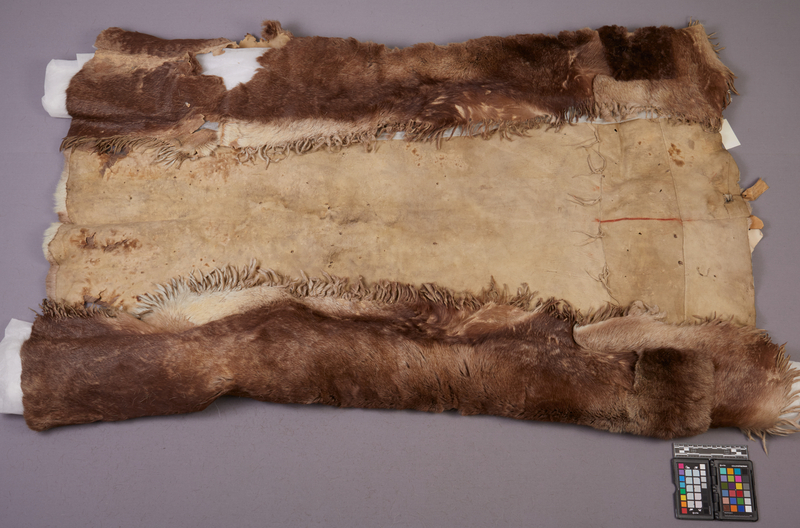


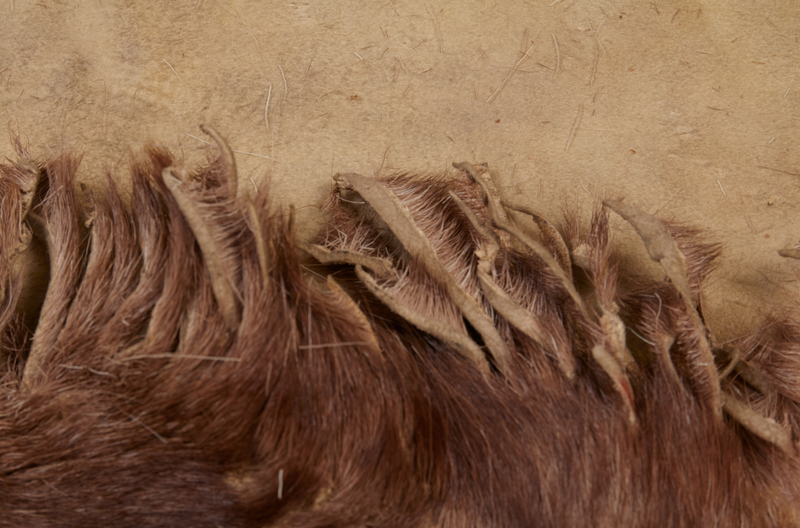

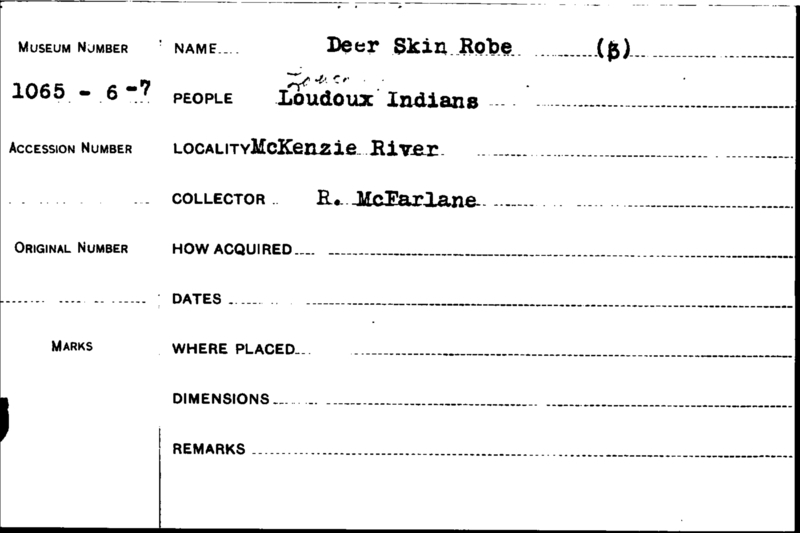
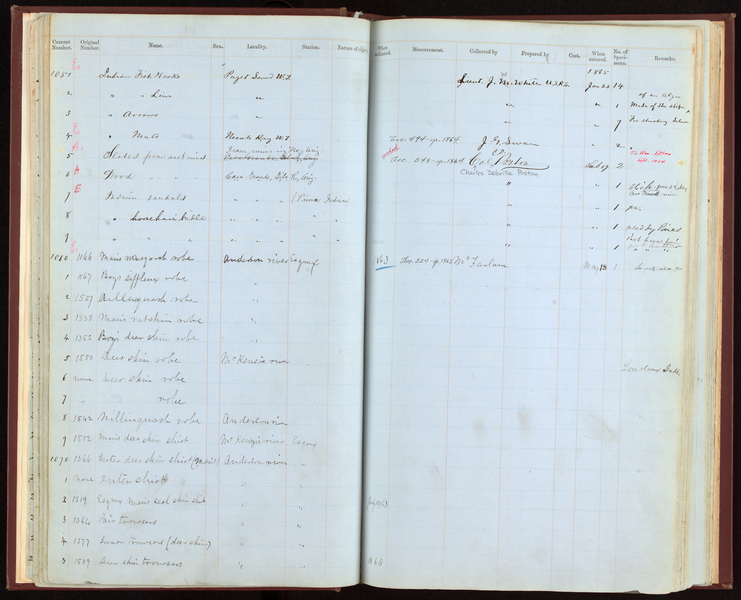
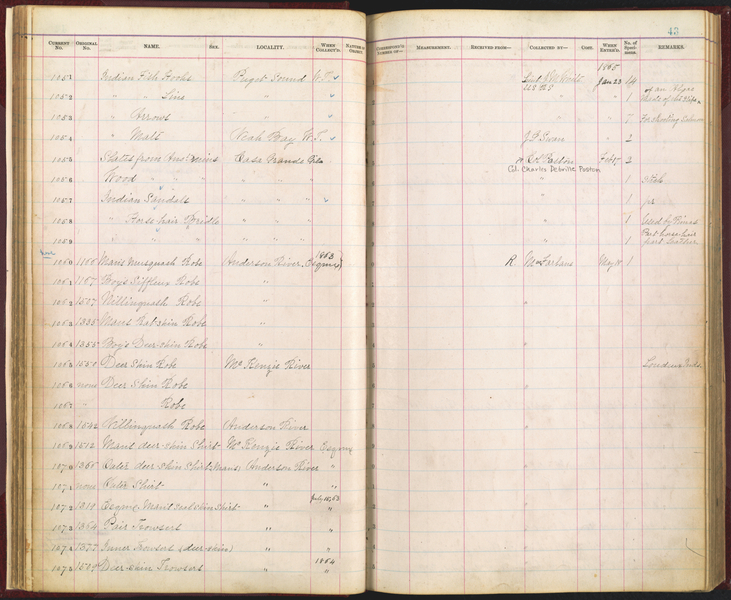
Notes
Illus. Fig. 3.18a (photo) and 3.18b (drawing), p. 110 in Thompson, Judy. 2013. Women's work, women's art: nineteenth-century northern Athapaskan clothing. Gatineau: Canadian Museum of Civilization. This robe is also analyzed in appendix 2, no. 12, p. 272. Identified as caribou hide robe, Gwich'in or possibly Inuvialuit (Mackenzie Delta Inuit); caribou hide, ocher. The body of the robe is made from three vertically aligned rectangles of furred caribou hide. The central segment is of medium brown fur, probably taken from the back of the animal. The two side pieces are probably from the flanks and belly, as the fur colour changes from brown to white along the unseamed edges (which form the front of the robe). A narrow, horizontally positioned rectangle of brown fur is sewn above the three rectangles and, above this, a piece of white-furred hide (from the belly) forms the top of the robe and a short, narrow portion on either side. The robe is edged with a short self fringe on two sides and along all but the middle section of the top. On the flesh side of the hides, a line of red ochre is drawn at the base of the fringing and another ochre line marks the centre of the narrow, horizontally placed hide segment. There is, as well, a piping of smoked caribou hide, slashed at an angle at intervals of about 10 cm to form a three-strand fringe, inserted in the principal seams.This object is listed, but not described or analyzed, in Inuvialuit Pitqusiit Inuuniarutait: Inuvialuit Living History, The MacFarlane Collection website, by the Inuvialuit Cultural Resource Centre (ICRC), Inuvik, N.W.T., Canada (website credits here http://www.inuvialuitlivinghistory.ca/posts/12 ), entry on this artifact http://www.inuvialuitlivinghistory.ca/items/63 , retrieved 1-17-2020.
Item History
- Made in Northwest Territories, Canada
- Collected by Roderick R. MacFarlane in Northwest Territories, Canada
- Received on May 18, 1865
What
- Name
- Caribou Hide Robe
- Identification Number
- E1065-0
- Type of Item
- robe
Who
Where
- Holding Institution
- National Museum of Natural History
- Made in
- Northwest Territories, Canada
- Collected in
- Northwest Territories, Canada
When
- Acquisition Date
- on May 18, 1865
Other
- Accession Number
- 65A00065